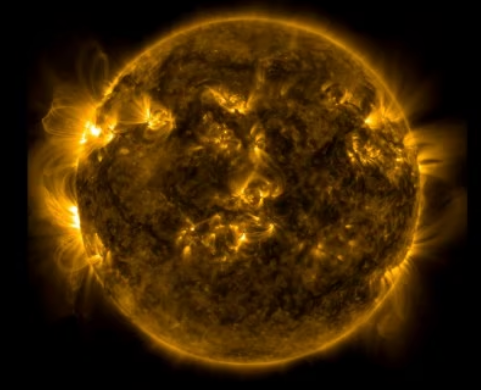News Excerpt:
Four solar flares erupt simultaneously in a rare celestial event, possibly heralding in the Sun’s dynamic 11-year cycle.

More about news:
- The sight of “sympathetic solar flares” in different regions of the star was captured by NASA’s Solar Dynamics Observatory, showing complex magnetic interactions.
- The four-part eruption began, originating from three sunspots and a large magnetic filament
- Each of the blast sites were separated by hundreds of thousands of miles and the area between them covered around a third of the solar surface facing Earth.
- The concurrent blasts were part of one single eruption, known as a sympathetic solar flare.
What are sympathetic flares?
- Sympathetic flares are caused by multiple eruptions across the Sun’s magnetic field, linked by massive magnetic field loops that lie above the solar surface.
- When one spot detonates, others follow suit. This leads to coronal mass ejections (CMEs) and massive bursts of plasma.
- Such solar activity is likely an indication of the Sun reaching the peak of its 11-year solar cycle known as solar maximum.
- The peak is marked by increased solar events like flares and CMEs.
- This is the third sympathetic solar flare this year, following a pair of explosions in January and a duo of X-class flares in March.
Why is this event rare?
- Most sympathetic flares reported so far include two linked flares, ranging from small outbursts to X-class flares, the most powerful class of solar flares the sun can produce.
- The emission of four flares in unison makes this event super-sympathetic.
How can they impact Earth?
- If directed towards the Earth, they have the potential to,
- Disrupt power grids
- Telecommunication networks
- Orbiting satellites
- Expose astronauts to dangerous doses of radiation
- Minor class G1 geomagnetic storms could also illuminate skies at lower latitudes with auroras.


